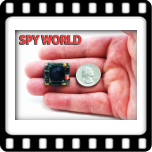Spy World Miami | GSM/GPRS




Main menu
GSM/GPRS
96 Miracle Mile Coral Gables, Florida 33134
[email protected]
305-542-4600
USA Eastern Time hours 10 am to 7 pm Monday thru Saturday
|
GSM and GPRS these two acronyms are well known in the world of mobile telephony, but you know what it’s the true meaning and how they work? Here we will give you a brief explanation of these two concepts. The first system is the GSM (Global System for Mobile communications) it is a digital communications system most used today to transmit voice and data where it digitizes and compresses the information and the transmission takes place, assigning to each call a time slot, which allows multiple calls to simultaneously share the same channel without interfering with each other. This system operates in the bands 900 MHZ and 1800 MHZ in Europe, Africa and Asia and the bands 850MHZ and 1900 MHZ in the United States. The 850 MHZ band is also used for GSM and 3GSM in Canada, Australia and several countries in Latin America. Let’s review a little GSM History At the beginning of the 80’s the first systems of Mobile communications appeared in the world. Each nation developed its own system and a mobile phone worked only in the country in which it was purchased, due to that the technology of each country was not compatible among each other. That's why technology is called National. In 1982, a consortium of European countries created the (Groupe Spéciale Mobile) GSM for develop a cellular technology that provides a common European mobile telephone service. Since the beginning the group had the idea that the new standard must use digital technology instead of the analog. The Group had to choose between the solution of narrowband or broadband and models of transmission or division frequencies. For this reason, they made several field tests to decide between narrowband or broadband standard. The solution chosen was the narrowband TDMA (Time Division Multiple Access). The GSM technology revolutionized the area of the cell communication at the beginning of the 1990s. The need to achieve a uniform and standard network led different countries to jointly create a global network that will allow the users to perform various functions with their mobiles and not limiting them to simple calls. The first phase of the GSM network was launched in 1991, covering the main European cities and it was followed by several more the following year. In 1995 the second phase of the network added the sending of data, fax and video over GSM. The system had a great reception and was expanding by several countries of the world. It became clear that GSM would be a global technology and non-European. That’s why the meaning of GSM began to mean “Global System for Mobile communications”. |
|
GSM Services: Entertainment Service
• Tv/Video - allows the user to see Tv programming on your mobile phone. | GSM/GPRS |
|
Voice Services
• Incoming calls management - offers to the user several options to handle the incoming calls.
• SMS - service to send and receive short text up to a maximum of 160 characters.
• Video - Sharing live videos while maintaining a conversation. GPRS (General Packet Radio Service) is a technology that remedied the deficiencies of GSM data transmission, introducing a switched network package that runs parallel to the switching of circuits of GSM. GPRS appears as an evolution not traumatic in the current GSM network; it does not involve large investments and reuse part of the current GSM infrastructure. For this reason, GPRS has the same coverage as the current GSM network since its inception. The main objectives of this technology are:
• Keep the transmission equipment and the same interface radio to GSM.
|
|
Some examples of applications that meet these characteristics are:
• RTI (Road traffic informatics).
• Theoretical maximum 171.2 Kbps transfer rate. | GSM/GPRS |
Some disadvantages of GPRS are:
• The network prevents the maximum speeds can be achieved. How work a GPS/GSM/GPRS tracker First, the GPS Locator is handled through a cell phone, a text message both for control and to receive notifications of the GPS Locator. Once the GPS Locator receives information or instruction of what they have to do, it will send a text message indicating the exact position in your GPS cell phone. Features You can track vehicles, such as vans or trucks, and schedule actions such as limited a geographic area, stop the engine of the vehicle in case of theft, spies features in your vehicle. This is a device of small size that can be installed in hidden places inside his vehicle. As mentioned above the GPS device requires of a SIM card (chip) from any cell phone company. Connects to the vehicle power to keep operating by itself alone. Internal battery backup that serve up to 6 hours, even if the car wires have been cut. Functions
• Location via GPS/GSM. |











